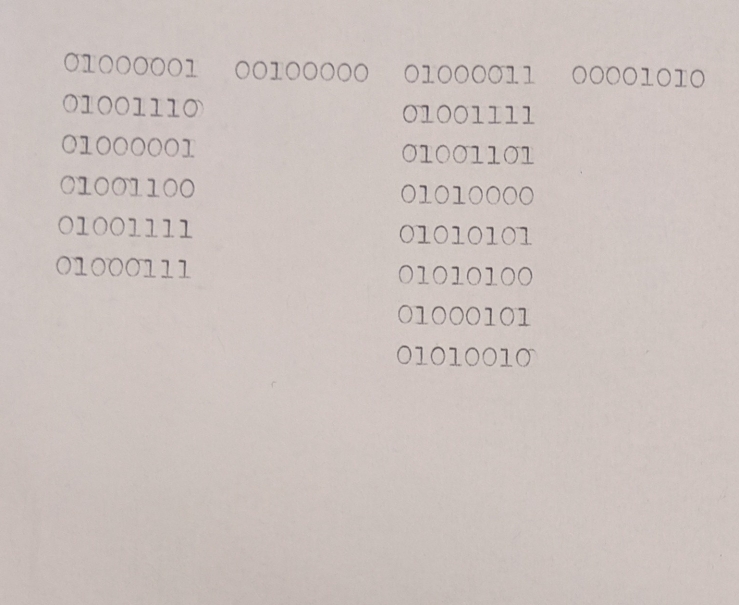Except for the 3D type project, I had only worked with digital type. I chose to use a typewriter. I thought it was interesting how the typewriter has influenced writing, art, technology and computers. They are simple machines but could be considered analog computers as their inputs and outputs can be purely mechanical. This got me thinking of modern times.
In any computer when I push a key, the character that appears is not really there in a physical sense and a technological sense. Letters are stored in binary or ASCII values, so what we see on the screen is just a representation of an unintelligible string of characters. This lead me to think about the opposite, writing the binary codes for letters on a typewriter, a physical tool for recording legible thought. To subvert this idea, I wrote the phrase “analog computer” in binary. For aesthetic reasons, I chose to write each word in its own column. The monospace type is a staple of the typewriter but also of current day code editors.
The second and fourth columns are the binary codes for the “space” and “end-line” characters, respectively.

During critique, someone mentioned that it looks like the “IT,” the abbreviation for information technology. I don’t know whether I like that coincidence or not.